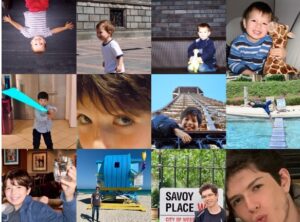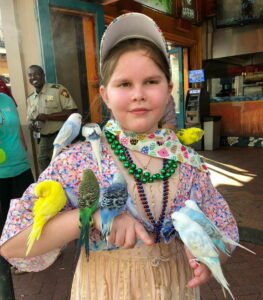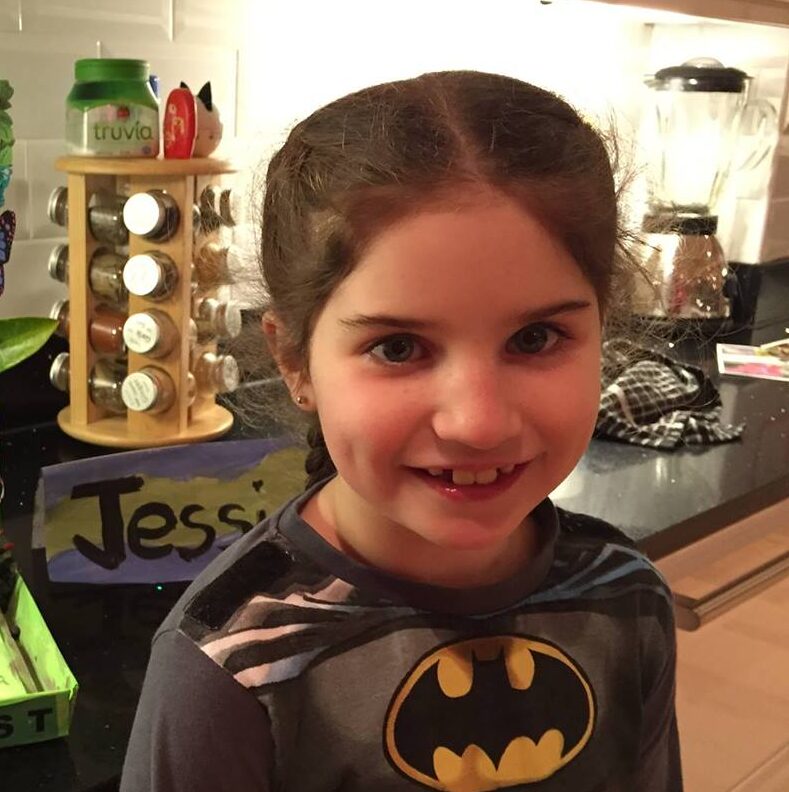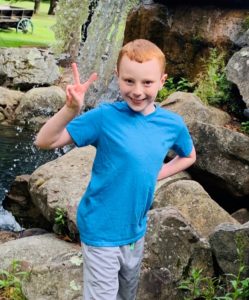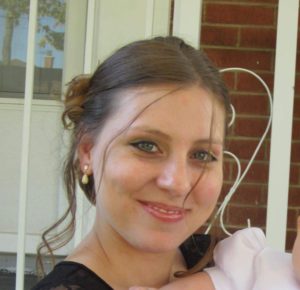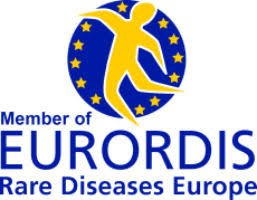Our journey with Ring Chromosome 20 Syndrome [r(20)] proved to be challenging and impossible to live with.
Rachel lost her life to epilepsy just 2 weeks before her 12th birthday.
By sharing our story I hope to raise awareness of this life changing condition and get others the help they so badly need.
First signs: ‘moments’
Rachel’s story begins with episodes of ‘daydreaming’ which were barely noticeable by anyone but me. Rachel reached her milestones and was full of life, much like any other 7 year old. I wasn’t really worried at the time but she was aware that something was happening to her, we used to say she had ‘one of her moments’. These ‘moments’ gradually increased and by the age of 9, Rachel also lost bladder control each time.
I approached our local GP for help as now I was worried something was wrong but the symptoms were so vague the GP said that Rachel was OK and if I was still concerned then to make another appointment.
The long road to a diagnosis
All kinds of diagnoses were suggested,
ranging from behavioural problems to anxiety disorder,
including ‘controlling the episodes’ and ‘doing it for attention’.
I was asked capture Rachel’s ‘moments’ on video and record the details of each one. I have 2 years of charts and little note books full of details. I would spend so much time recording everything, not being able to live a normal life. Because no one believed Rachel had a medical condition she was given Play Therapy sessions at school and I was asked to complete a Parenting Course. Time passed and nothing improved, I knew my little girl and something wasn’t right. After more visits to our GP, hospital appointments and endless phone calls, Rachel finally had an EEG then an MRI scan, both frightening experiences for Rachel and showed results within the normal range! More phone calls, waiting and tests followed with no answers.
Then, one day I took Rachel to A&E (Accident and Emergency) with an overnight bag and said I was staying there until Rachel got the help she needed. During our wait Rachel had one of her ‘moments’. She was seen by a consultant and admitted onto a ward where she had another ‘moment’. A doctor happened to be passing by, she came over to us and said that Rachel was having a seizure…she has epilepsy. I was both relieved and scared at the same time hearing this news. Rachel was monitored, we were given medication and sent home.
Treatments: trying to control the uncontrollable seizures
Over the next few months we were given a cocktail of medication and steroids, each different one seemed to help at first then have little effect or very bad reactions resulting in unusual and aggressive behaviour, significant weight gain and more hospital admissions.
Our little girl went from being fun loving, happy and enjoying life to being withdrawn, sad and tired with outbursts of aggressive behaviour often aimed at me and her 2 younger brothers. Seizures would end up with her crying and saying that she had felt alone, scared and not be able to hear properly, struggling to walk or even stand and needing a nap to recover.
Despite all the medication, Rachel had numerous seizures which were still uncontrollable and she had many episodes of ‘Status Epilepticus’. Phenytoin caused an allergic reaction called Stevens Johnson Syndrome. My heart broke when I saw her, she looked so poorly and almost lost her life. Rachel was transferred to Birmingham Children’s Hospital where there were more tests, a lumbar puncture, Ketogenic diet (this was Easter time and when I went to visit Rachel said ‘I had some chocolate!’ – this wasn’t allowed on the diet). Then finally
an induced coma with the hope of ‘resetting’ her brain.
After a week the doctors feared that because Rachel was so weak she may never wake up…
so when she did, she proved what an amazing little fighter she was and
slowly had to learn how to eat, drink, talk and walk again.
It was at Birmingham Children’s Hospital after blood and skin testing that we received the diagnosis of r(20) syndrome, we were told very little but given a handful of leaflets. No further testing was done.
Educational impact
School life changed dramatically, having lost so much time, being home schooled, then returning part time, Rachel was unable to concentrate properly. Teachers still refused to accept that Rachel needed special help saying:
‘she only has epilepsy’
I feared for her safety and tried to get her admitted into a special school. Yet another battle which involved many multidisciplinary team (MDT) meetings and Rachel having to attend mainstream secondary school while her Education Health Care plan (EHCP) was finalised. Rachel wasn’t safe, being left to navigate the school alone and there was little I could do about it. She would have seizures every day and night, find it difficult to wake up on time and keep up with her lessons. We even had the truancy officer out to the house due to lateness! Her consultant was as frustrated as I was and agreed to attend one of the meetings to explain her condition. Soon afterwards the school said that they could no longer manage Rachel and she was eventually offered a place at a special school early 2012. She settled in well, even started to enjoy school again, making new friends and memories.
 The seizures continued daily and nightly then one night it proved to be too much for her body, Rachel had a seizure and never woke up.
The seizures continued daily and nightly then one night it proved to be too much for her body, Rachel had a seizure and never woke up.
Our beautiful precious little girl.
Forever in our thoughts.
Thank you for reading our story.
I hope this helps in some way and that researchers gain more knowledge to help others in their journey.
Ring20 are eternally grateful to Rachel’s mum for sharing her story. She told us:
I won’t lie it’s been quite a challenge, going through all our notes and recalling all the struggles has been really emotional and that’s why I’ve put it off.
I’ve started her story before and not finished it.
This time it’s done. I’ve relived the whole nightmare and cried a lot.
I know that Rach would be smiling now and happy to know she could be helping others.
Sudden Unexpected Death in Epilepsy (SUDEP) is the sudden, unexpected death of someone with epilepsy, who was otherwise healthy. In SUDEP cases, no other cause of death is found when an autopsy is done. Each year, more than 1 in 1,000 people with epilepsy die from SUDEP. This is the leading cause of death in people with uncontrolled seizures.
SUDEP Action – the only UK charity supporting and working alongside those whose loved ones have died suddenly from an epilepsy-related death – have lots of information on their website.



